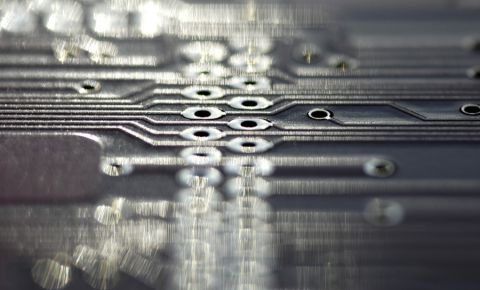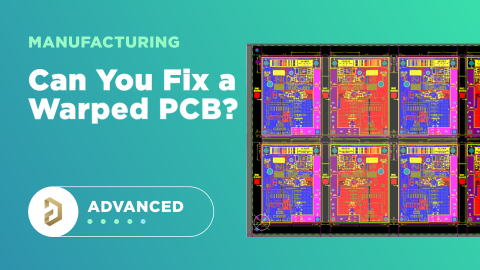Mass Production and Manufacturing Mindset

In true engineering spirit, let’s start by establishing the scope of this article. The intention isn’t to tell you exactly what to do if you need to mass-produce the device you’ve designed or show you what changes to make. This intention is to explore the mindset you need to adopt and the critical thinking you’ll need to do if you need to either design a device from scratch for the mass market or turn your one-off prototype into a format that better lends itself to mass production. We’ll do this by discussing a few hypothetical thought experiments so you can see how to see what the issues might be, approach these problems and come up with solutions that fit your circumstances.
Many pressures come to bear when you need to tune your design for volume manufacturing. One is the manufacturing time. Suppose you’ve invented the next must-have toy that all the kids are begging their parents to buy, and the Christmas holidays are only a few months away. You need to get the toy onto the shelves now to exploit the demand. There’s no point in having the perfect toy build for it to reach the stores after Christmas is over. The market will have slumped as the parents would have spent their money on something else, and chances are the kids will have moved on to wanting something different. Here the pressure is to design a device that can be manufactured quickly. Source components must be readily available, and the board geared for automated manufacture and assembly. Having a hard-to-source component or a design that requires hand assembly will scupper any plans to meet consumer demand when it’s at its peak.
Another important factor is cost, especially in competitive high volume markets like domestic appliances or automobiles. The carmakers operate to tight margins on large production runs using a just-in-time philosophy. They will have several different suppliers to guarantee the supply chain’s integrity and components’ availability. The last thing a carmaker wants is to have to stop their production line because they’ve run out of that $10 device that controls the heated seats. Simultaneously, if they are purchasing several million of these devices, reducing the unit price by $1 will put any supplier in a prime position to get the largest share of the orders. Therefore, the suppliers are under extreme pressure to meet supply deadlines and reduce costs to a minimum. So, let’s now explore a few options that are available to the designer.
Component Costs
We can see that if you’re making a million units a year, replacing a $2 component with a $1 version will immediately save a cool million bucks. Sounds easy, but then if they do precisely the same job, why were you using the more expensive component anyway. Let’s look at a more realistic scenario. Suppose your design uses a 2 µF capacitor that has a unit cost of 50 cents. You notice that you can buy a 1 µF capacitor with slightly better performance characteristics for just 20 cents. This means that if you use two of the smaller 1 µF components instead of the one 2 µF component, you save 10 cents. If you’re building a million units, you’ve just saved yourself $100,000. Even better, the device’s performance will be slightly better because the new components have a better specification. Of course, it’s never that simple; let’s now look at the consequences of this decision.
Design implications
Let’s assume that the 1 µF component is roughly the same size as the 2 µF component for convenience. The layout design for your board will need to be slightly rejigged to fit in the extra part. OK, if this is a one-off, and you have spare space. If you have several components to add and your board is already full, then you may well have a problem. Worst case options include using a larger board area, changing parts to use alternatives with a smaller footprint, or redesigning the layout from scratch to reroute traces and fills to create the space needed. In this hypothetical example, the good news here is that you’ve saved $100,000 on the component purchasing budget that can go towards paying for this design effort.
Supply costs
Considering the implications of using the smaller capacitors, instead of ordering one million 2 µF capacitors each year, we now need two million 1 µF capacitors. The increased volume of orders might get you an even better price from your supplier on the plus side. On the downside, we’ll assume that when it’s in its protective packaging, a 1 µF capacitor will be pretty similar in size, shape, and weight to a 2 µF capacitor. So now you need to ship twice as many materials into our manufacturing plant, increasing the shipping costs. Imagine that 1 million components fill four trucks; we now need eight trucks, which doubles the fuel used and the drivers’ labor cost. Arriving at your manufacturing plant, you now have twice the volume of components to unload from the trucks and move into your stores, a job that will take twice as long or need twice as many workers to achieve the same results as before.
That’s now twice as much shelf space required, which needs heat and lighting. This can be resolved by tuning the just-in-time system you have in place with your capacitor supplier to keep the same number of components in stores consumed at twice the previous rate as long as the supplier can also deliver at twice the previous rate. The net effect is cost neutral, but an increased risk that the time available to resolve any problems in this particular supply chain will be halved before it halts the production line.
With the redesign effort and potentially additional warehousing costs, the original $100,000 saving is suddenly getting spent quickly.
Quality Control
Next comes quality control; if you routinely inspect incoming components or test samples as part of your quality management system, you’ve now doubled the inspectors’ and testers’ workload. Usually, sampling is performed on a fixed percentage of the components coming into the manufacturing facility to check they are of acceptable quality in terms of performance, failure rates, and build. One option is to halve the sampling rate, so the net workload is unchanged, the risk being that a faulty batch of components could slip through the quality checks and not be identified until the completed devices are in the hands of the consumers. If you're supplying parts to a carmaker, delivering faulting components can have a huge impact financially thanks to the recall and correction costs required to fix the problems. It will also have a significant reputational impact. In a cutthroat supply market, the last thing you need is a reputation for low quality that your competitors will jump on and exploit.
However, maintaining the same sampling rate for twice as many capacitors probably isn’t an issue unless it’s the only component you’re using. Realistically, if you’ve got 100 different parts coming into stores, having to double the inspections for just one of those components will have a small impact on the overall workload.
Production Costs
The next step is the transfer of components from stores to the production equipment. These particular components are now being consumed twice as fast for the same rate of production. However, realistically, if the board being manufactured had 50 individual components, you’ve increased this to 51 components, which is only roughly a 2% increase, so somewhat negligible in the overall scheme of things. This also applies to the placement of the components on the board and the soldering process. Assuming a reasonable number of components are used to make the device, adding one extra component will have little impact. It certainly won’t have any noticeable effect on the amount of solder used in the process. However, as this is just a thought experiment, you can see that if you’re doubling the number of components, this can significantly affect the time needed to populate the board.
The good news here is that with automated production equipment for component placement and flow soldering technology, a slight increase in the component count has a minimal effect.
Results
Our simplistic thought experiment has shown that changing components to save costs will cause a cascade of significant implications that will increase costs. The majority of these additional costs will be in the one-time design expenditure. While these may be significant given experienced design staff are not cheap to employ, these costs will be recouped over the product’s entire life. The greater the number of devices manufactured each year, and the longer the production run extends, the greater the overall savings. This is why industries such as automotive and consumer electronics put so many resources into product development. The long-term savings when production runs equate to many millions of units can be substantial.
Component elimination
This leads us to the next consideration, what savings can we make by reducing the component count. If we go back to our theoretical board with its fifty components and a million a year production run, what happens if we can reduce the component count to forty items.
First, we’ve saved the cost of purchasing the components. This, on its own, represents a huge potential saving. Next, we no longer need to have these components shipped to our factory, unloaded from the trucks, stored in the warehouse, or inspected by the quality control team. That’s a saving in shipping costs, workforce, and shelf space. Here we’re talking about a 20% reduction in the component count so that these savings will impact the bottom line production costs. We have manufacturing itself, loading components into the manufacturing equipment, placing components on the board; these processes are now potentially 20% faster. This is a rough back-of-the-envelope estimate; of course, it will depend on what sort of components have been eliminated and what types remain.
So, previously when we saw reducing component costs had positive and negative impacts, eliminating components is positive with one exception. Of course, you can’t just eliminate components on a whim; this has to come out of the design process. This saving relies on the design engineers devising cunning ways to reduce the component count but maintain the same functionality. However, the good news is that in the mass-production world, the potential savings are so significant that the design team’s budget to achieve this goal can be generous.
With the availability of microprocessors with a broad array of integral functions and the designers’ ability to specify a reasonably priced bespoke processing device, software and firmware can be used to replace hardware functions.
Take the example of a device fitted to a car connected to sensors dotted around the vehicle. They could be temperature and pressure sensors in the crankcase to monitor the oil or the radiator monitoring the coolant. One thing we can be sure of is the signal from the sensors will be noisy. An engine bay of a gasoline-powered vehicle is full of EMI from the ignition system and the alternator and vibration effects from the various rotating parts. A design engineer’s first instinct is to add filtering to each sensor’s inputs. Maybe a simple single-order RC filter or a more complex active bandpass filter circuit made using a discrete op-amp, a couple of capacitors, and a handful of resistors. One alternative solution is to connect the noisy signal lines directly into the ADC inputs of a processor and rely on software to sample the converted waveform and generate a clean signal for use in the main algorithms. The extra work that the software team needs to perform allows a typical discrete active bandpass filter to eliminate potentially seven components.
There is always the possibility that the complete removal of the filtering may affect the device’s operation. Noisy signals routed directly to the processor may be coupled onto other traces, degrading overall performance. It may be necessary for the design team to look at a halfway house solution where, for example, the active bandpass filter is replaced by a simple low pass filter supplemented by software processing. In this case, we’ve still turned a circuit utilizing seven components into a circuit with just two components, eliminating five components. This highlights the importance of optimizing components in the design as an integrated part of the design process to explore and understand the implications of decisions fully.
Of course, in this simple example, the filtering could be easily implemented within the processor hardware. Still, the principle applies to just about all of the standard signal processing functions that may traditionally be implemented using discrete components.
A more realistic example is encoding and decoding video signals, traditionally implemented using hardware to perform the required reformatting of signals and any compression/decompression necessary. These were typically implemented using a dedicated processing unit to deliver the fast throughput needed for live streaming images. It’s now commonplace to find cameras fitted to cars to provide an enhanced rearview for reversing maneuvers or front bumper mounted cameras to make pulling out into traffic safer if some obstacle or structure blocks the driver’s view. However, microprocessors available with faster and faster processing speeds have allowed the designer to replace dedicated peripheral processing units and implement their functions within their central processor as a software function without impacting the throughput of the existing software-based functionality. While software encoders may not achieve the speeds needed for high definition transmissions, they are more than adequate for the video systems used in a vehicle. As a bonus, upgrading the video system can be done as a software change rather than replacing the physical device. This makes a move away from dedicated hardware circuits to software-implemented functionality particularly attractive from a marketing point of view as upgrades to include new or improved functions can be delivered to customers relatively cheaply and quickly.
Conclusion
I hope these simplistic examples have provoked a few ideas and given you a taste of the thought processes that a design engineer needs to embrace when their end product is intended for a mass market. The economies of scale push the emphasis of cost savings back up the production process to the initial design stage, where the most significant benefits can be realized. Eliminating components through careful design delivers much more significant savings than shaving costs by looking at cheaper parts.
The design tools in Altium Designer® contain everything you need to keep up with new technology. Talk to us today and find out how we can enhance your next PCB Design.









